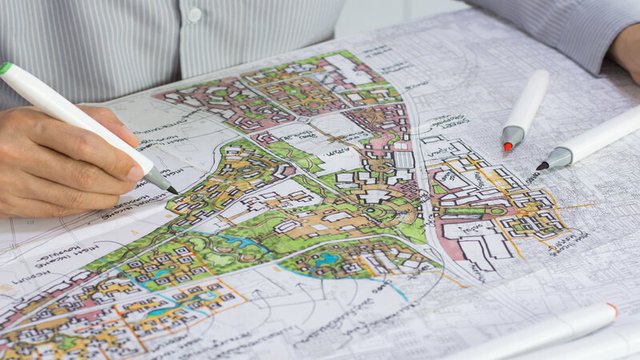

The development and transformation of urban spaces are at the heart of creating liveable and functional cities. In this intricate landscape of urban evolution, two distinct but intertwined disciplines emerge: urban planning and urban design. While they share common goals of enhancing urban environments, they differ significantly in their focus, methods, and objectives.
In this blog post, we will explore the differences between urban planning and urban design, shed light on their definitions and provide examples or what they are and how they combine when creating new spaces in our towns and cities.
And if you are keen on a career in this ever-evolving area, either as an urban planner or an urban designer, you should consider a programme such as a Master in Architecture or a Degree in Architecture.
Urban planning is a broad field primarily concerned with creating comprehensive strategies and policies for the development and growth of cities and regions. Planners in this field work to balance various factors, including population growth, land use, transportation, and environmental sustainability, to ensure that cities function efficiently and sustainably.
Examples of urban planning initiatives include:
For instance, a city's decision to allocate specific areas for residential, commercial, or industrial purposes falls under the purview of urban planning. This discipline aims to establish a roadmap for the city's development, making it an organised and cohesive entity.
Urban design, on the other hand, is concerned with the aesthetics, functionality, and human experience within specific urban areas. It focuses on the arrangement and design of streets, public spaces, buildings, and landscapes to create visually appealing, user-friendly, and culturally relevant environments.
Examples of urban design projects include:
Urban designers often strive to create spaces that are not only functional but also aesthetically pleasing and in harmony with the cultural and historical context of the area. Their work can profoundly influence the character and identity of a city or neighbourhood.
As mentioned, urban planning and urban design go hand-in-hand in transforming and updating cities and the facilities they have on offer. However, let’s look at the key differences between them:
Both urban planning and urban design offer diverse career opportunities for people passionate about shaping urban spaces. Common job titles in urban planning include urban planner, city planner, transportation planner, and environmental planner. Urban designers can pursue careers as urban designers, landscape architects, architects, or public space designers.
To embark on a career in urban planning or design, a degree in architecture or other related fields such as urban planning or geography is often the starting point. However, many urban planners pursue master's degrees such as the one mentioned to get even more specialised knowledge.
At Universidad Europea, our academic model is based on a learning by doing method. Throughout your programme, you will have the opportunity to take part in internships and work placements with leading architecture firms, and other organisations in the sector, getting to see firsthand the skills you’ll need to be a successful designer or planner. Our faculty is made up of leading experts in their field, most of whom are also still working, allowing you to get the very latest insights and developments in the sector.